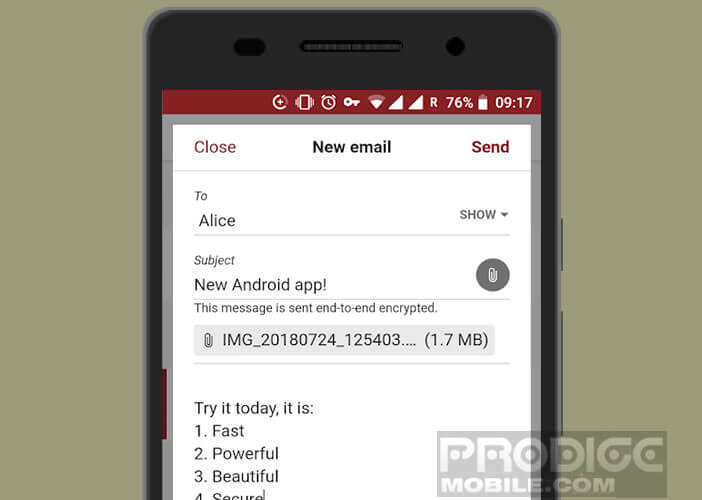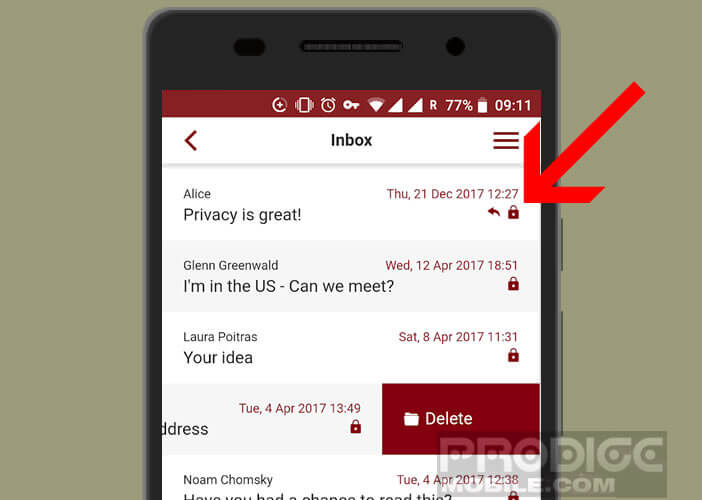
Since Edouard Snowden's shattering revelations about surveillance programs on the Internet, a large number of Internet users have become aware of the importance of protecting privacy. We are thus seeing an increasing enthusiasm for secure messaging. Discover in this guide how to configure and use Tutanota encrypted messaging from an Android mobile..
Introducing Tutanota
You are certainly wondering what is behind this curious name. To understand the meaning of Tutanota, you will have to immerse yourself in a Latin dictionary. Indeed, the term Tuta comes from the word Tutari which means to protect. The Latin phrase Note refers to the mail. The contraction of these two words will give birth to Tutanota which can be translated by secure messaging.
Tutanota is therefore a secure and ad-free email service. This service was launched in 2011 in Germany. The engineers behind this messaging set themselves the objective of offering a solution offering a level of security while remaining easily accessible for the average user..
The entire mailbox but also the attached parts and the address book benefit from a secure encryption system. In addition, all the data is stored on machines located in Europe and more precisely in Germany.
Information penetration test on the Tutanota network
But that's not all. To attest to its high level of security, the German start-up has subjected its mailbox to a thorough penetration test. The operation was carried out by an independent IT security player, SySS GmbH, the European leader in penetration testing..
During the year, SySS consultants carried out various attacks such as those used by hackers. These did not identify vulnerabilities that could compromise data security. They were thus unable to access confidential information, namely emails and address books.
Another important point, Tutanota uses a password evaluator to ensure that the secret code used by its subscribers corresponds to the expected security criteria. Using a strong password reduces the risk of intrusions.
What is end-to-end encrypted messaging?
Obviously all these security devices implemented by Tutanota are only useful if the messaging service offers an end-to-end encryption system. This mechanism ensures confidentiality of exchanges and prevents (a priori) any attempt at surveillance.
The public and private keys used for message encryption are provided by Tutanota when you create your account. Thereafter, the encryption and decryption operations will be carried out automatically without any intervention on your part.
Note that end-to-end encryption only concerns messages sent to Tutanota users. Regarding emails sent on other platforms, correspondents will receive an email inviting them to register on Tutanota.
How to create a secure email address with Tutanota
There is a growing demand for more secure service. This is even more true with email messaging. E-mail has become in the space of a few years one of the preferred means of communication.
 Easy, free and accessible from any connected device, email remains one of the biggest threats to privacy. Indeed, some suppliers do not hesitate to use your conversations and those of your correspondents to enrich their database or to do profiling (dissemination of targeted advertisements).
Easy, free and accessible from any connected device, email remains one of the biggest threats to privacy. Indeed, some suppliers do not hesitate to use your conversations and those of your correspondents to enrich their database or to do profiling (dissemination of targeted advertisements).
Tutanota messaging is one of the few services to respect the privacy of its users. And unlike the standalone email client with PGP encryption, it turns out to be very easy to use.
- Open web browser
- Type the address https://tutanota.com/fr/
- Click the Connect button
- Press the More button then Register
- Then select the type of offer that interests you (Free, Premium or Pro)
- Enter the email address of your choice
- Please enter a sufficiently secure password
- Accept the terms of use
- Press the Next button
- The mail management interface will then open
- Click the New Email button
- Enter the email address of your correspondent subscribed to the Tutanota service
- Then enter the subject and the message
- The mention This message is sent end-to-end encrypted will appear under the Subject line indicating that the message is encrypted
